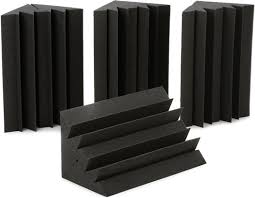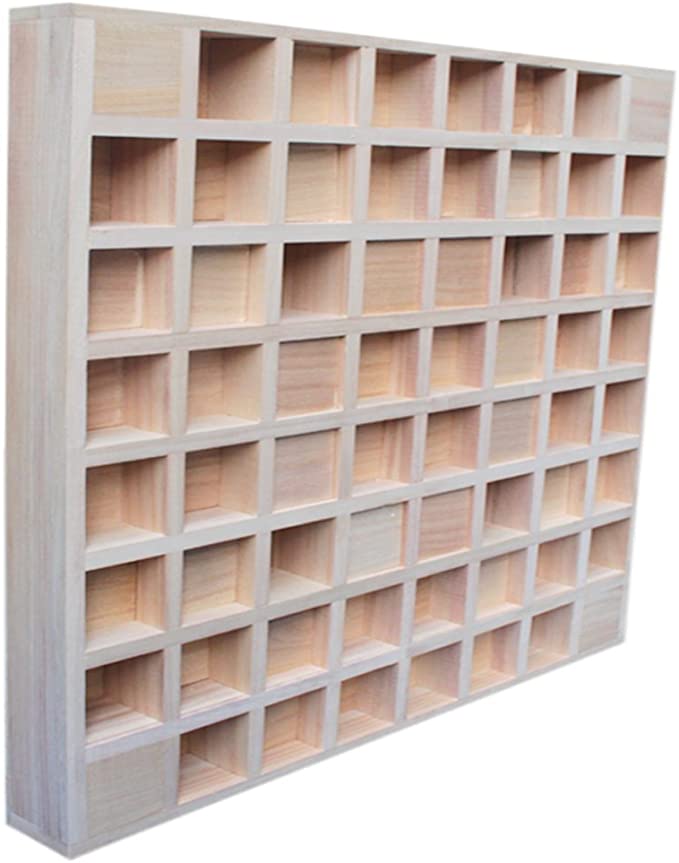
A Guide
Sound Panels for Home Audio
Buy from AmazonWe receive a small kickback from our partners when you click through and purchase the great gear we recommend. Details
Sound Treating Your Home Studio
A Guide
- Don Makoviney
- Last Updated: September 16, 2020
It can be tricky to figure out how to make your space acoustically sound if you don't know what you're doing. Here is a helpful guide to help get you started + some of our favorite picks at MSCGR!
Sound treating a home studio is often neglected. However, it is quite possibly the best thing you could do for your studio.
Bear in mind, it’s easy to get really, really, really into treating your room. So much so, that you may end up spending all your time fussing with your room and not getting any recording done. This website is dedicated to researching and testing so you can spend more time getting projects done. There are people whose entire career is just room treatment.
Here are a few things to consider before you start sound treating:
What Type of Space You’re In
Evaluate what you actually need for your space before you waste money buying things you don’t! Consider how high your ceilings are, how wide your room is, and where you have your doors and windows.

I’d recommend walking around your room and yell or sing loudly to see where you hear the harsher ringing sounds. If you hear any at all it means you definitely need some absorption panels. However, sometimes too many absorption panels can be dangerous.
E-Home Recording put it best:
When you remove all sound reflections with absorption, many people find that the room sounds uncomfortably “dead.” The solution here is to allow a few reflections to remain, and to scatter them with diffusors. Normally untreated reflections create problems because they get trapped in one spot, amplifying some frequencies, while canceling out others. This is how the natural frequency balance gets destroyed. Diffusors work by scattering reflections so nothing gets trapped, and the natural tone is preserved. With the right combination of both absorption and diffusion, you can transform the acoustics of virtually any room…

Your desk should also be set up to some loose guidelines. Your speakers should be at head height, and the distance between your speakers should be equidistant to where you are sitting and mixing.
This article from ProAudioFiles has a great diagram of desk placement for your room shape.
Where is the Sound Traveling?
On the mixing side of things, you’ll want to consider where your monitors are facing and what surfaces the sound waves are reflecting off of. This even includes the ceiling and the space behind your speakers. After diffusing those surfaces, it allows you to hear exactly what your monitors are outputting without any reflection back into your ears from different angles.
Understanding Which Frequencies are Problematic
If your room isn’t dampened enough, you won’t be able to accurately hear the sound your monitors are outputting. If the sound waves aren’t dispersing around you it will make mixing things like delay and reverb a nightmare. There will be too much echo in the space if there’s no sound absorption happening.
It’s best to know what frequencies your monitors are outputting and then adjusting your surroundings as needed. You want the flattest frequency response you can get; Typically 20 Hz to 20kHz is the ideal range. Soundguys explain frequency response best:
Frequency response measures if and how well a particular audio component reproduces all of these audible frequencies and if it makes any changes to the signal on the way through. For example, what’s the lowest frequency that subwoofer X can reproduce. Barring any deliberate EQ settings, the ideal frequency output of a component should be equal to the input, so as not to alter the signal. This is often called a “flat” frequency response, where a fixed volume sine wave (measured in decibels) can be swept through the system and will be the same amplitude at all frequencies at the output.
By sound treating our studio, we are just accentuating the sound our monitors are outputting by getting rid of unnecessary reflections.
Bass traps are great for unwanted low frequencies too. They’re a lot thicker than normal panels so the extra density helps diffuse the low end beautifully. They fit best in corners of the room where extra reflection might be happening.
Even having a thick mattress or a big plushy couch in the corner will have the same desired effect. The thicker the material, the better the low end absorption.
Sound Panel Materials
Typically in home studios you’ll see a lot of foam panels. People tend to buy these because they’re cheap and easy to adjust. I personally enjoy having these around in case I need to isolate an instrument while tracking. I can just pull a couple out and voila! But when it comes to acoustic treatment, they aren’t going to get you very far.
Sure panels like these are great for adding a little more absorption of high/mid frequencies, but you don’t need as many as you think you do. If you’re going to buy foam-anything, go for some nice bass traps. A good set of foam bass traps is going to take care of your high, mid, and low frequencies. Triple whammy!
Fabric panels are just as effective as the cheap foam ones and a fun way to customize your home studio.

Fiberglass panels are ideal for extreme sound absorption. It’d be pretty rare to see fiberglass in somebody’s home studio unless they’ve got a buddy in construction to help install it. They’re beasts to install and more geared towards sound proofing rather than sound treatment. They are pretty unnecessary if you’re simply trying to just get better acoustics within your room.

Wood panels are typically used for sound diffusion. They help diffuse the sound waves in different directions where the reflections might be harsher sounding. A lot of producers like to mix diffusion panels with absorption panels for a more balanced effect. Plus wood panels tend to look really cool in a studio!
Some types of wood panels also absorb some sound, it just depends how soft the wood is.
Our Favorite Treatment Solutions
So now that you know what everything does, here are some of our favorite options at MSCGR:
Absorption
Auralex is popular among amateur and professional producers. They’re one of the top dogs in the acoustic treatment industry. Luckily for us, they make excellent sound treatment packs that you don’t have to worry about needing anything else.

One of our favorites is the Studio Starter Kit. It’s great for a small home studio setup. It includes 8 foam panels and 4 bass traps. If you need more than that for a big space, we’d recommend the Auralex Alpha DST Roominator kit.
Diffusion
BXI makes some great wooden sound diffusion panels that also just look really good in your studio. I have friends who love these things mixed in with their foam panels. They’re also the perfect size for a diffusion panel in my opinion. Not too big but big enough. I love the way they sound placed behind my head when mixing.
Don’t get too overwhelmed with all the sound treatment options out there. Go with our favorite picks and you won’t have to worry about your acoustics ever again. Chances are your set up already sounds pretty great as is, but you just need a little help to perfect it.
Happy Recording! 🙂
Tell Me If There's A Deal For This
Sound Treating Your Home Studio
A Guide

Important Specs
No Tech Specs Yet
Synopsis:
It can be tricky to figure out how to make your space acoustically sound if you don't know what you're doing. Here is a helpful guide to help get you started + some of our favorite picks at MSCGR!
No Rows Found

Best Bass Traps
Auralex Lenrd Bass Traps
The best bass traps on the market. Have the best noise reduction coefficient out there; you'll never need to upgrade from these bad boys.

Best All in One
Auralex Studio Starter Kit
The best pack for getting started in acoustically treating your space. Auralex is one of the most trusted acoustic brands out there.

Best Diffusion Option
BXI Sound Diffuser
A great diffusing option that's the perfect size and looks super clean in your space. Mix it with some absorption panels and you've got the perfect setup.
Important Specs
No Tech Specs Yet
Follow MSCGR
Talk To Us
Did we miss a recommendation? Is there something you'd like to see us review? Typos? Mistakes? If so, drop us a line.
